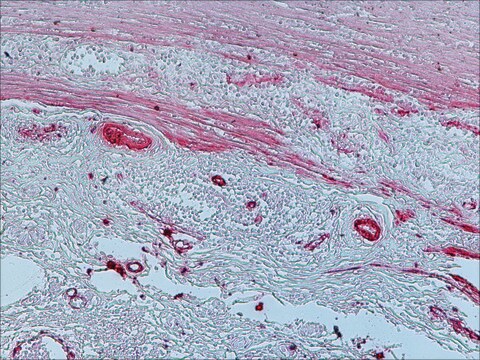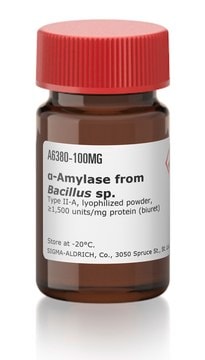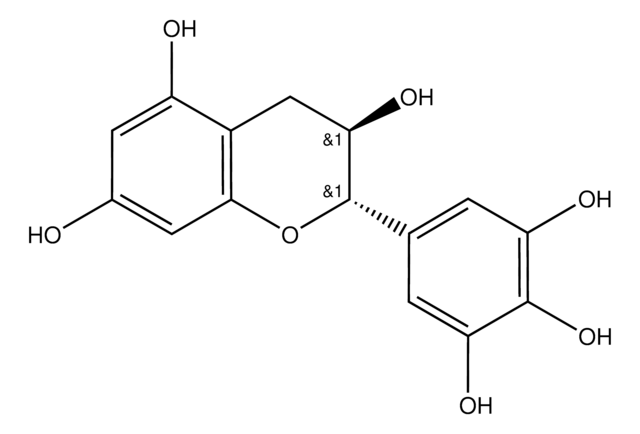A4605
Anti-iASPP antibody, Mouse monoclonal
clone LXO49.3, purified from hybridoma cell culture
Synonyme(s) :
Anti-Inhibitory Member of the Apoptosis-stimulating Protein of p53 Family, Anti-RAI, Anti-Rel-associated Inhibitor
About This Item
Produits recommandés
Source biologique
mouse
Niveau de qualité
Conjugué
unconjugated
Forme d'anticorps
purified immunoglobulin
Type de produit anticorps
primary antibodies
Clone
LXO49.3, monoclonal
Forme
buffered aqueous solution
Poids mol.
antigen ~100 kDa
Espèces réactives
mouse, human
Concentration
~2 mg/mL
Technique(s)
immunocytochemistry: suitable
immunoprecipitation (IP): suitable
microarray: suitable
western blot: 0.1-0.2 μg/mL using total cell extract of human osteogenic sarcoma (U-2-OS)
Isotype
IgG1
Numéro d'accès UniProt
Conditions d'expédition
dry ice
Température de stockage
−20°C
Modification post-traductionnelle de la cible
unmodified
Informations sur le gène
human ... PPP1R13L(10848)
mouse ... Ppp1r13l(333654)
Description générale
Application
- immunoblotting
- immunocytochemistry
- immunoprecipitation
Actions biochimiques/physiologiques
Forme physique
Clause de non-responsabilité
Vous ne trouvez pas le bon produit ?
Essayez notre Outil de sélection de produits.
Code de la classe de stockage
10 - Combustible liquids
Classe de danger pour l'eau (WGK)
nwg
Point d'éclair (°F)
Not applicable
Point d'éclair (°C)
Not applicable
Faites votre choix parmi les versions les plus récentes :
Déjà en possession de ce produit ?
Retrouvez la documentation relative aux produits que vous avez récemment achetés dans la Bibliothèque de documents.
Notre équipe de scientifiques dispose d'une expérience dans tous les secteurs de la recherche, notamment en sciences de la vie, science des matériaux, synthèse chimique, chromatographie, analyse et dans de nombreux autres domaines..
Contacter notre Service technique







